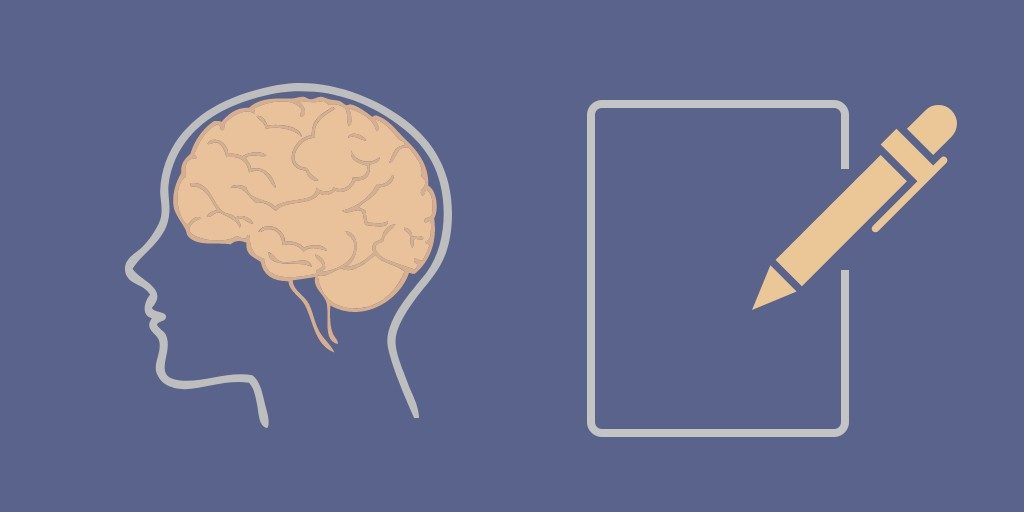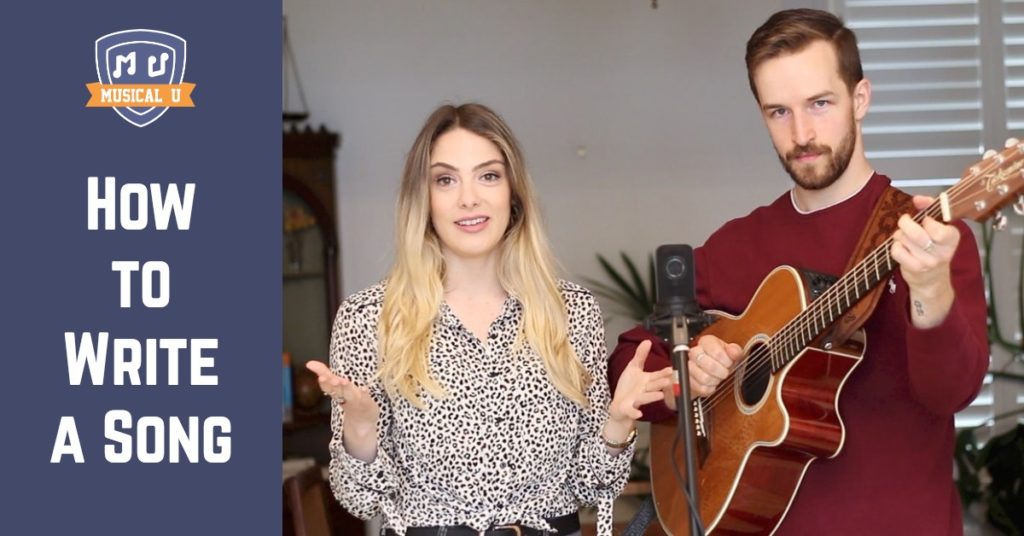What’s in a song? Orian and Obadiah from musical duo O&O (@oandoduo) show you how to put a song together, whether your strengths lie in lyrical wizardry, beatmaking, or melody-writing!
There is no one approach to songwriting. Everyone’s creative process is unique, and different songwriters come up with tunes at different speeds. However, if you’re looking for a starting place, look no further!
There are four main elements to every song: lyrics, melody, harmony and rhythm. There is not a general rule of thumb for which of the elements comes first in the songwriting process. You can choose whether you want to approach your new song by writing the lyrics, melody, chords, or beat first. In this video, we will give you our tips and practical exercises, along with some examples from famous songs, of how to bring these elements together to form a song:
Getting Started
It is helpful to approach songwriting in two consecutive modes: the brainstorming mode and the editing mode. These are essentially two different mindsets. It is very important that these two are separate, because the “editor” in you has a tendency to disrupt the brainstorming process and suppress creativity.
We have all experienced that “editor” voice in our heads, critiquing every thought before we even had a chance to express it. While brainstorming, you allow all of your ideas to exist without judgment. Think of it as a “creative flow zone” where there are no “bad” ideas.
 You enter the “editing” mode only after fully exploring and putting down your creative ideas. Once you enter the editing mode, it is time to roll up your sleeves and look at your outputs as objectively as possible. You then pick the best parts that will eventually become your song. It is important to allow as much time as needed in each mode and not to get frustrated if things do not come together right away.
You enter the “editing” mode only after fully exploring and putting down your creative ideas. Once you enter the editing mode, it is time to roll up your sleeves and look at your outputs as objectively as possible. You then pick the best parts that will eventually become your song. It is important to allow as much time as needed in each mode and not to get frustrated if things do not come together right away.
Some songs come together with ease in a matter of minutes and some can take years of struggle, but each song has its own unique journey!
Let’s look at the three parts of writing a song, and how each one can be approached.
1. Lyrics
It can be hard to know where to start with lyric-writing. If you’re feeling completely stuck, try free writing: it’s a great way to start with a “blank canvas”, especially if you do not already have any ideas. Put a timer on for up to three minutes at a time and commit to writing for the whole duration without pausing to lift your pen from the paper. Do not think about what you are writing – just write. It can be anything from what you are feeling right now, to describing what you had for breakfast.
This is a great way to get the “editor” out of your system and allow some creativity in. Once you’ve finished writing, take a break and come back to review it later. When reviewing, you will see that certain themes, phrases or lyrics pop out. Those can serve as the basis to your new song. You can also use this process if you already have a theme or title in mind. Simply allow yourself to write freely for a few minutes, keeping that theme or title in mind as you write.
 If you already have a melody and/or harmony, with little to no lyrics, you can try singing whatever words come into your head. This can be just vowels or gibberish; it doesn’t have to make any sense because, initially, you are only trying to find the sounds that best suit the melody or the word that evokes the most emotion on a certain note! By repeating this, you will eventually find the perfect lyrics.
If you already have a melody and/or harmony, with little to no lyrics, you can try singing whatever words come into your head. This can be just vowels or gibberish; it doesn’t have to make any sense because, initially, you are only trying to find the sounds that best suit the melody or the word that evokes the most emotion on a certain note! By repeating this, you will eventually find the perfect lyrics.
Don’t be discouraged if brilliant lyrics don’t immediately pop into your head! Paul McCartney had the entire melody for “Yesterday” before he had any lyrics, so to fit the phrasing of the melody he sang “Scrambled eggs, oh my baby how I love your legs” instead of, what would be, “Yesterday, all my troubles seemed so far away“. It would have made for a very different song!
2. Melody and Harmony
Maybe you have an idea for a melody, even if it is only a hook or a few notes that came to you in the shower. We could make a whole separate video about what makes a good melody, including the different types of intervals and melodic movement, but as a good rule of thumb try and make your melody memorable. If you can’t remember it, no one else will be able to!
How a melody sounds is also greatly affected by the harmony you put under it. One technique for harmonizing the melody is to figure out what notes you are singing on a piano, guitar, or other instrument, and build the chords around those notes.
For example, if I sing the note “C”, I can try harmonizing it with any chord I know that contains the note “C”: C major, C minor, A minor, F major, F minor, Ab major, and so on. The different chords you try will change the context of the note you are singing, and you can use your ear to find the chords that sound the best to you.
As with any creative process, there is no right or wrong; it’s a matter of choice.
You’ll probably notice that one chord will fit your melody for a bar or two before you have to change to the next chord. You wouldn’t usually change chord every note (unless you’re writing a jazz song!).
If you don’t have a melody, try starting out with a chord progression. To keep it simple, choose a key and only use chords from that key. If you’re feeling stuck, start with one of these tried and tested chord progressions:
- I-IV-V (blues)
- I-vi-IV-V (Stand By Me, by Ben E. King)
- I-V-vi-IV (Let It Be, by the Beatles)
Loop the progression and improvise a melody. Try recording yourself and see what you come up with, then when you listen back, you can select the best parts and form the melody!
To demonstrate the power of the looped-chord approach, here’s a little anecdote: Phil Collins had this chord progression on a loop with a drum machine: Dm, C, Bb, C. He sang improvised melodies and lyrics until he wrote the international hit “In The Air Tonight”:
3. Rhythm
If you don’t already have a rhythm in mind, you can use GarageBand or Logic’s built in drum loops as a starting point to get inspired. This sure worked for the writers of Rihanna’s hit “Umbrella” – the beat of the song was actually inspired by a hi-hat sound from a GarageBand loop!
If you don’t have access to music software, even singing or playing along to a metronome will do if you don’t have access to any music software.
Writing songs at different tempos and in different time signatures (4/4, 6/8, or 3/4) will inspire you to write in different ways. Most likely, a drum loop at 144 BPM will inspire a different style of melody and lyric than a ballad at 60 BPM. Think about the overall feel and function you want for the song, the rhythm will help you achieve this.
The Beauty of Collaborative Songwriting
If you are feeling overwhelmed, do not worry! You do not have to master all these elements to write a song.
If you are primarily a lyric writer, find a musician who will complement your abilities by putting your lyrics to music. The same goes if you have a melody in your head, but no idea how to put chords or lyrics to it.
”Some songs come together with ease in a matter of minutes and some can take years of struggle, but each song has its own unique journey!”
There have been many famous writing partnerships: Lennon/McCartney, Goffin/King, Rogers/Hammerstein, Elton John/Bernie Taupin, and Benny Andersson/Bjorn Ulvaeus from ABBA. You can even find a group of musicians to collaborate with. These days, numerous hit songs credit as many as nine songwriters on one single record!
Whether you’re most comfortable starting with some words, a melody you hummed to yourself, or a beat you tapped out with your feet while waiting for the bus, remember that it will take some time for the song to come together. So enjoy the creative process, and don’t hesitate to bring some other musicians along for the ride!
Try one of these approaches whenever you are feeling a little stuck or uninspired, or if you just want to challenge yourself by trying something different. Grab your instrument, pen and paper, or just hum a melody and write a song!








